History originally published in AutoWeek, February 2, 1987
For the large automobile manufacturer, the launching of each new model represents a risk of manageable proportions. Even a Vega or Edsel can be survived.
Not so the smaller manufacture. On the slippery slope of automotive commerce, it must continually find a foothold or go slithering into oblivion. Once a foothold is found, it cannot be lightly forsaken.
So it was with the legendary Italian sports car maker Lamborghini and its most popular model, the Espada.
The Espada was introduced in 1968, at a time when Lamborghini was replacing its 400GT, an update of the original Lamborghini model, the 350GT, with the quickly forgotten Islero, and riding the serendipitous success of the Miura, which was stealing magazine covers around the world – and deservedly so. The Miura now is considered a classic, one of the more celebrated cars of the postwar era.
The Espada earned a few covers and rave reviews of its own, but after the first year or so of production one didn’t hear much about it. That’s why they call news news. The Espada wasn’t new.
What it was, was selling. Lamborghini had created a car that was genuinely unique, and exotic high-performance four seater, not a two-plus-two that required legless, neckless passengers for the rear seat, but a true four-place car in which four adults could ride in comfort. True, the backseat was a little low for those accustomed to parlor car lounges, but there was room between the front and back seats to compensate. And two, the Espada had only two doors… But what doors. You could park an elephant in the backseat if it could find a place to sit.
Of course, there was that marvelous V12 upfront. This was the same engine that powered the 400GT 2+2, the Islero, the same engine that was twisted sideways and re-carbureted for the Miura. For the Espada the 4.0liter twelve produced 390bhp at 7000rpm, 320lb ft torque at 5000 rpm . That’s what an over-square 3.23×2.44in bore and stroke, two overhead cams per bank, and six dual-throat Weber carburetors will do for you.
However, the most striking aspect of the Espada was not its internal specifications but its Bertone-styled body. Based on the elegant Lamborghini Marzal show car, a four-seater with lots of glass and octagonal forms, the Espada was by far the largest car Lamborghini had made. It had a wheelbase 4.0in longer an and overall length 8.7in longer than the Islero, and it was 5.1in wider and 4.5in lower. And it looked it. But lower, longer and wider never look so good, the design emphasizing these attributes with a simple, flat hood, a featureless grill marked only by four headlights, and a side motif of horizontal lines. The vents, at least most of them, were functional. (The NACA scoops on the hood were for ventilation of the passenger compartment; the slits in the fender sides were intended to remove air from under the hood.)
The bold statement, though, was the fastback roof line, never before done so well on a car so big. It’s a shape – trust us – that owns the high road.
And what a chic limousine this is on any road. I drove the 1974 Beirut Auto Show car (no jokes, please), purportedly the only Espada ever to come from the factory fitted with white leather interior. It is currently owned by Jim Kaminski, of St. Petersburg, Fla, and president of the Lamborghini Owners Club, and Steve Claason, president of Tropical Sports Cars in Fort Lauderdale, but its history includes residence in Libya and Great Britain (different owners) before its arrival in Florida in 1981. This was one of the most lavish of all Espadas. Although the introduction price for the model was $21,000, this one was invoiced at $46,000.
In normal cruise mode the car is very quiet, with only enough background noise to remind one that this is an exotic. But put the throttle down and the personality changes; the Webers sing, the V 12 growls and no matter what the speed, the big Lambo pushes you back in the seat – which is amazing. This is a 3700lb car, remember. Top speed is 155 mph in fifth. I didn’t see that but I can confirm 110 mile-per-hour in third and the Espada is still, well, charging like a bull. Cornering, for as much as I was able to learn on the straight roads of Florida, is commendable, but the driver can never forget that this is no Abarth. The only odd note was the shifter. It shifted well enough, but as a result of the way the engine and transmission are mounted, it pogoes up-and-down disconcertingly.
The Lamborghini factory was not at all disconcerted by the way the Espada sold, however. Espada means sword and with it the specialist firm from Sant’ Agata Bolognes carved its own niche. By the time it went out of production in 1978 more Espadas were made than any other Lamborghini, some 1217 in all, almost twice the number of Urracos or Miuras. When you’re good, the roots hold fast.









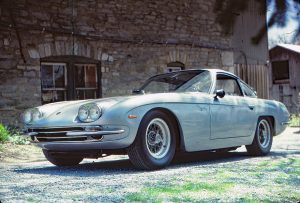
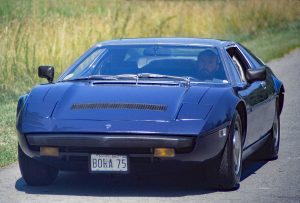
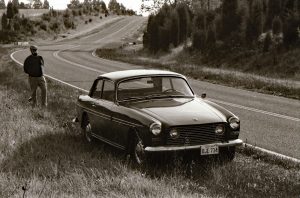
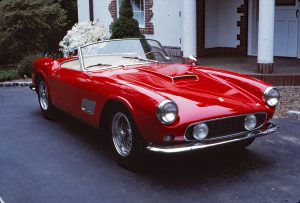
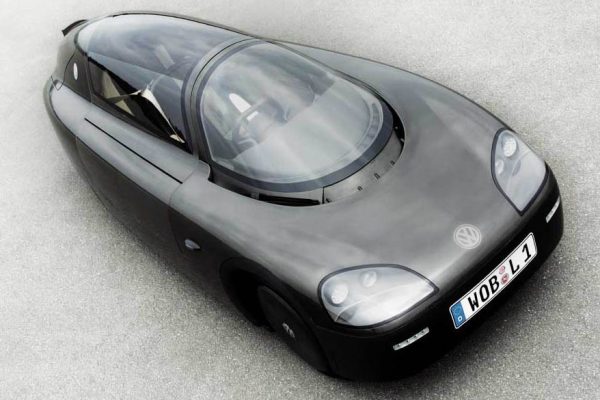
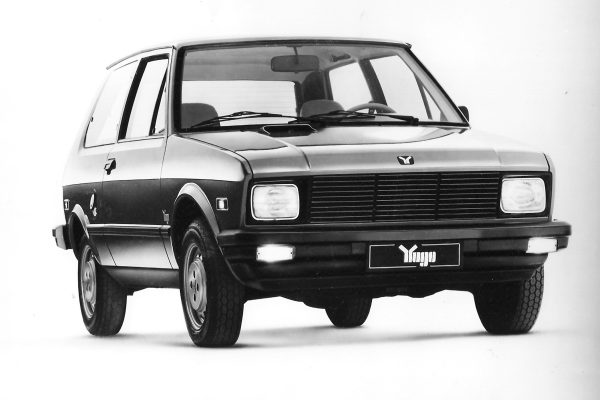
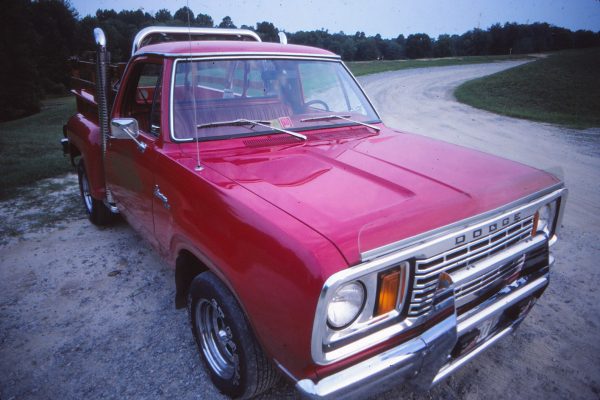
What Do You Think?
You must be logged in to post a comment.